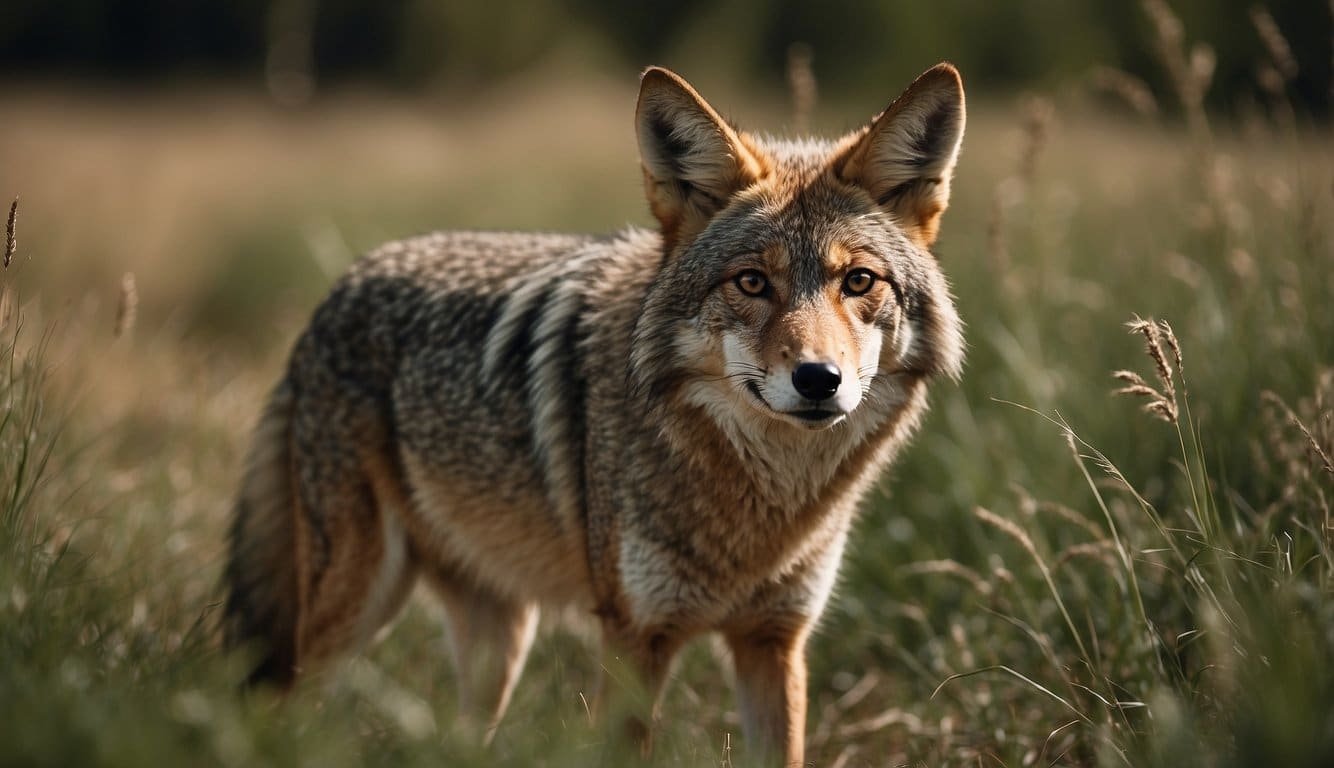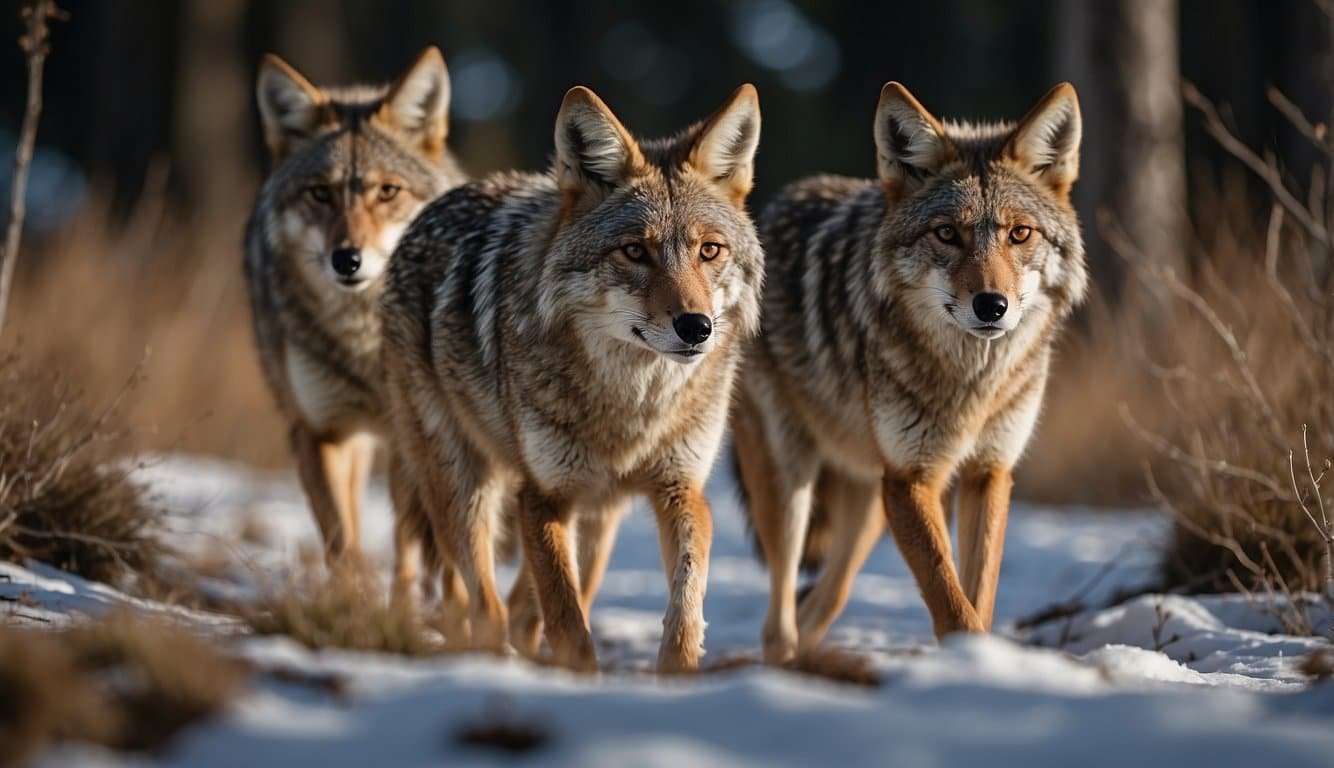Coyote Basics
Diving into the world of the crafty coyote, Canis latrans, reveals a fascinating creature adept at surviving in a variety of habitats. From their distinctive physical features to their widespread presence across the continent, coyotes are a resilient and adaptive species.
Physical Characteristics
Coyotes boast a versatile coat color, typically a mix of tan, brown, white, and shades of reddish or yellow fur, which provides camouflage in their diverse habitats. They can easily be recognized by their pointed ears and bushy, black-tipped tails. A medium-sized member of the Canidae family, adult coyotes typically weigh between 20 to 50 pounds and exhibit a keen sense of hearing, which aids in hunting and alertness.
- Body size: Medium-sized, 20 to 50 pounds
- Coat color: Tan, brown, white, reddish, yellow
- Ears: Pointed
- Tail: Bushy with a black tip
Habitat and Distribution
Coyotes made their home across North America, from the Great Plains to forests, mountains, and even urban areas. They are highly adaptable and can thrive in various ecosystems including plains, deserts, and grasslands. These canines originated in North America and have since expanded their range from Canada to Central America.
- Initial range: North America
- Current range: Canada to Central America
- Habitats: Plains, deserts, forests, mountains, urban areas
Discover fascinating facts about this animal in an increasing suburban problem, which sheds light on the adaptability and behaviors of coyotes in suburban landscapes. Further insight into their population mechanics and interactions can be explored in the population model study.
Diet and Hunting Behaviors

Coyotes are known for their adaptable feeding habits and skilled hunting strategies which play an essential role in their survival across diverse environments.
Feeding Habits
Coyotes have a highly varied diet that primarily consists of small mammals like rabbits and rodents. However, these cunning animals are not choosy eaters; their diets also encompass insects, fruit, and carrion. In urban areas, coyotes may adjust their feeding behavior to include livestock and pets on occasion. Additionally, their diet adapts seasonally; for instance, they’ll consume more fruits and vegetables during the summer months.
Predation and Competition
When it comes to hunting, coyotes are known for their opportunistic and versatile tactics. They often hunt alone to catch smaller prey but may form groups for larger animals, such as deer. These animals are also in constant competition with other predators such as wolves, cougars, and badgers for resources. Interestingly, coyotes can alter their hunting patterns in the presence of these competitors to reduce confrontations and maximize their chances of a successful hunt. Despite facing threats from other larger carnivores and even hunters, coyotes have remained resilient, showing remarkable behavioral adaptability to avoid becoming prey or pests themselves.
Reproduction and Social Structure

Coyotes are fascinating creatures with complex behaviors that encompass a variety of reproductive strategies and social structures that respond to environmental conditions.
Mating and Offspring
Coyotes typically form monogamous pairs, which mate once a year during the late winter months. Litters average four to seven pups after a gestation period of about 63 days. The dens, strategically located in territories established by the adult pair, provide shelter for the pups who are dependent on their parents for food and protection.
Pack Dynamics
Pack structures vary widely among coyotes, from isolated monogamous pairs to larger groups that control extensive territories. Coyotes communicate within these packs and neighboring groups through a series of howls, yips, and other sounds, often during the evening and early morning hours. These vocalizations serve to strengthen social bonds within the pack, assert territorial claims, and coordinate hunting and defensive behaviors.

